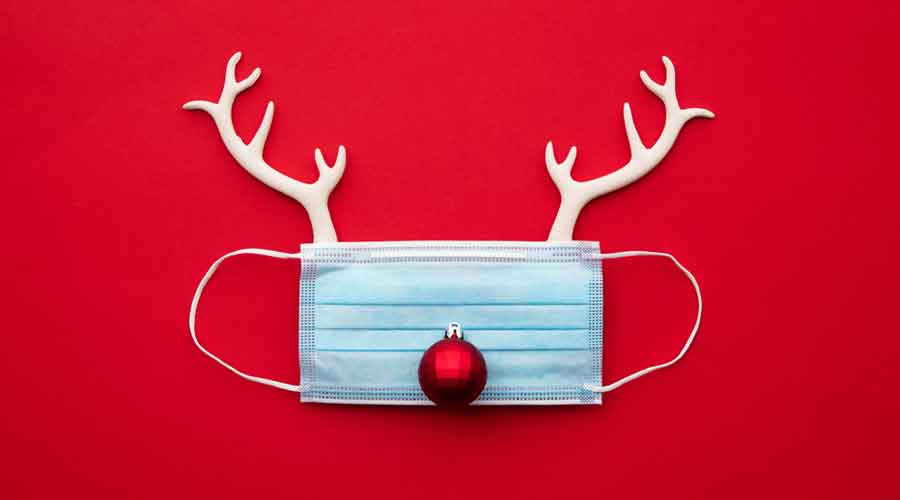The days are getting shorter and cooler. Winter will descend upon the northern hemisphere along with several family-centred holidays that may tempt many to celebrate in ways they have wisely resisted for most of the Covid-19 pandemic. And our annual infectious visitor, the influenza virus, promises to complicate the picture, causing its own surge of debilitating infections that each year claim the lives of tens of thousands of Americans.
For more reasons than most people realise, both flu and coronaviruses have the ability to spread more easily from person to person during the colder, drier days. The risk is not limited to the fact that in colder weather people spend more time indoors, potentially exposed to others who may harbour and spread an infectious virus. The risk is also influenced by lower temperatures and relative humidity that can increase the viral load of the air we breathe.
Of course, far more is understood about the behaviour of the flu virus than the novel coronavirus. Rossi A. Hassad, a public health researcher and statistician at Mercy College, Dobbs Ferry, US, reported recently that both viruses “share key transmission characteristics”. Hassad and other experts say what is known about the flu virus can inform our understanding of how and why Covid-19 is likely to become even more hazardous and this knowledge can, in turn, reinforce the advice that everyone adopt readily available measures to thwart it.
Alas, we cannot afford to wait for a safe and effective Covid-19 vaccine. Despite the intense excitement over an early report from Pfizer of a promising experimental vaccine in the research pipeline, it may be six months or longer before this or any vaccine is likely to be widely available.
“The fatality rate is at least 10 times higher than from the flu,” Hassad said. “And the Sars-Cov2 virus is more efficiently transmitted by both respiratory droplets and aerosols, which are smaller than respiratory droplets.”
In colder, drier air, respiratory droplets lose water content and become smaller and lighter and thus able to linger in the air for longer periods, creating “a perfect recipe for exposure to a higher viral load” both indoors and out.
“Low humidity during winter enables the influenza virus to live longer indoors and this, together with spending more time indoors and in closer contact, significantly increases the risk of transmission and infection,” Hassad wrote in MedPage Today.
Furthermore, both the flu virus and the Sars-Cov2 have a fatty outer membrane that keeps them structurally sound and protects the RNA they contain that infects cells, causing disease. In temperatures at or near freezing, this membrane solidifies, forming a rubbery coat that helps the virus survive and move more readily from person to person.
Characteristics of our own nasal passages enhance the risk of infection. Nasal passages become dry and more susceptible to damage when the humidity is low, making it easier for viruses to invade.
These factors, along with “a high level of transmissibility (including asymptomatic transmission) and virulence of Sars-Cov2, create a perfect recipe for an even more explosive pandemic”, Hassad noted. Given that the vast majority of people have no immunity to Covid-19, he wrote, it “has the potential to parallel the 1918 flu pandemic if we fail to comply with the protective measures recommended”.
Stanley M. Perlman, a microbiologist at the University of Iowa, US, who has studied coronaviruses for more than four decades, said the “key variables” for a new explosion “are people spending time indoors in places not well-ventilated and without masks”. While air exchange in a hospital unit takes place 12 times an hour, air in a room in a private home is exchanged only once or twice an hour.
Perlman emphasised, “This is a remarkably contagious virus. Our biggest worry is Covid-19 fatigue. People are losing respect for the virus and letting their guard down, which is a bad idea.” Even outdoors, “if you’re standing one foot away from someone and not wearing a mask,” you could transmit or contract it.
“The nose and mouth are the virus’s portal of entry,” Hassad said. “How can a mask not be a barrier against an organism coming toward me? There’s been an obvious difference in infections where masks are being worn consistently. It’s common sense, and it’s not a huge burden.”
NYTNS










